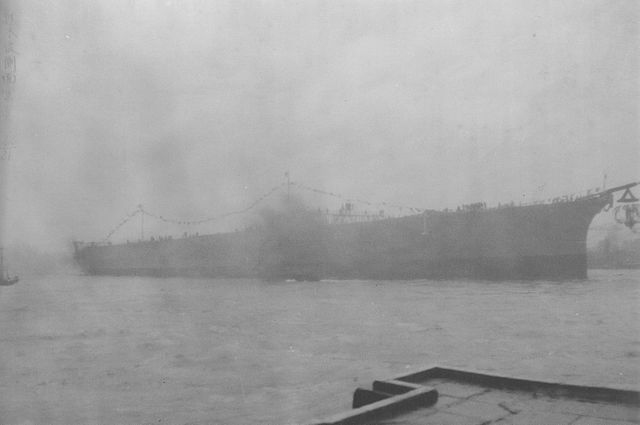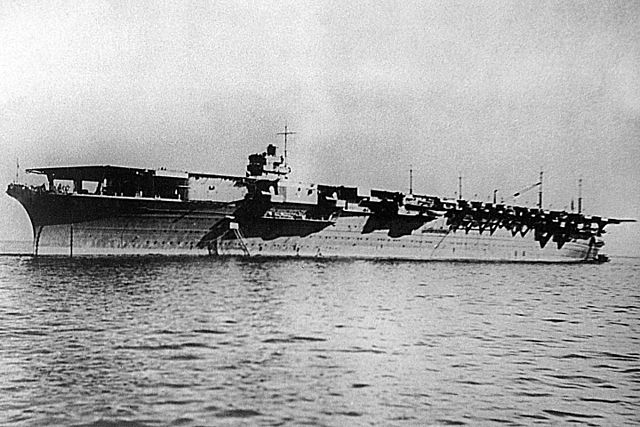Japanese aircraft carrier Shōkaku
Shōkaku was the lead ship of her class of two aircraft carriers built for the Imperial Japanese Navy (IJN) shortly before the Pacific War. Along with her sister ship Zuikaku, she took part in several key naval battles during the war, including the attack on Pearl Harbor, the Battle of the Coral Sea, and the Battle of the Santa Cruz Islands, before being torpedoed and sunk by the U.S. submarine USS Cavalla at the Battle of the Philippine Sea.
Shōkaku upon completion, 23 August 1941
Shōkaku being launched in heavy rain at Yokosuka, 1 June 1939.
The twenty-eight chief shipbuilders of Shōkaku pose at the ship's prow prior to launching (30 May 1939).
Mitsubishi A6M2 "Zero" fighters (fighter division commander : Tadashi Kaneko ) from Shōkaku preparing for the attack on Pearl Harbor.
Shōkaku-class aircraft carrier
The Shōkaku class consisted of two aircraft carriers built for the Imperial Japanese Navy (IJN) in the late 1930s. Completed shortly before the start of the Pacific War in 1941, the Shōkaku and Zuikaku were called "arguably the best aircraft carriers in the world" when built. With the exception of the Battle of Midway, they participated in every major naval action of the Pacific War, including the attack on Pearl Harbor, the Indian Ocean Raid, the Battle of the Coral Sea, the Guadalcanal Campaign, the Battle of the Philippine Sea and the Battle of Leyte Gulf.
Shōkaku at Yokosuka, 8 August 1941, shortly after she was completed
Zuikaku at anchor on the day she was completed, 25 September 1941
12.7 cm (5.0 in) Type 89 guns aboard Zuikaku, November 1941
The island with its Type 21 radar aboard Zuikaku, 1942–43







